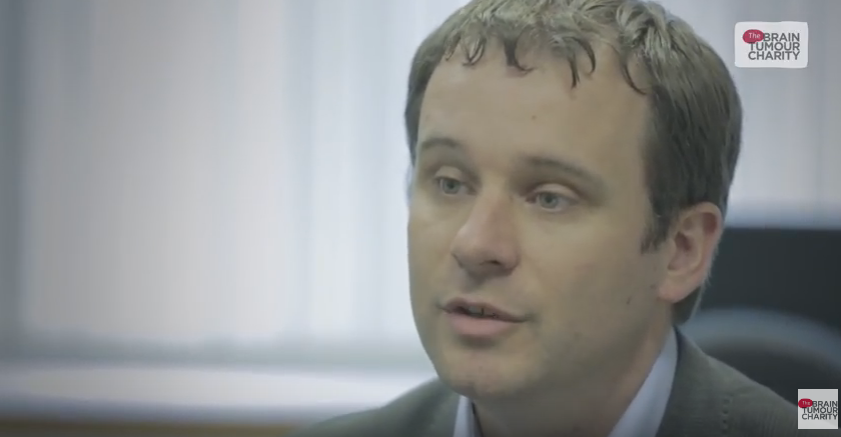Understanding left-over tumour cells
Fast facts
- Official title: TRIGER: Targeting Residual Invasive cells for Glioblastoma ERadication
- Lead researcher: Mr Stuart Smith
- Where: University of Nottingham
- When: October 2016 – November 2017
- Cost: £95,485
- Research type: Adult, Glioblastoma (High Grade), Academic
Mr Stuart Smith is a Clinical Associate Professor of Neurosurgery with the Nottingham University Hospital NHS Trust, he also holds a post as a researcher at the University of Nottingham. In 2013, Mr Smith received the “courtesy title of Hunterian Professor”, a prize from the Royal College Surgeons of England for his high quality surgical research.
Mr Smith will be using the 5-ALA drink which is taken by patients ahead of surgery to make tumorous cells glow pink (and why it’s also known as ‘the pink drink’) to analyse the residual cancer cells left in a patient’s brain after surgery.
By removing these cells – which will also glow pink – and identifying the precise mutations within them, he hopes to develop targeted treatments which could lead to fewer tumour recurrences.
Research is just one other way your regular gift can make a difference
Research is the only way we will discover kinder, more effective treatments and, ultimately, stamp out brain tumours – for good! However, brain tumours are complex and research in to them takes a great deal of time and money.
Across the UK, over 100,000 families are facing the overwhelming diagnosis of a brain tumour and it is only through the generosity of people like you can we continue to help them.
But, by setting up a regular gift – as little as £2 per month – you can ensure that families no longer face this destructive disease.
